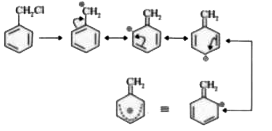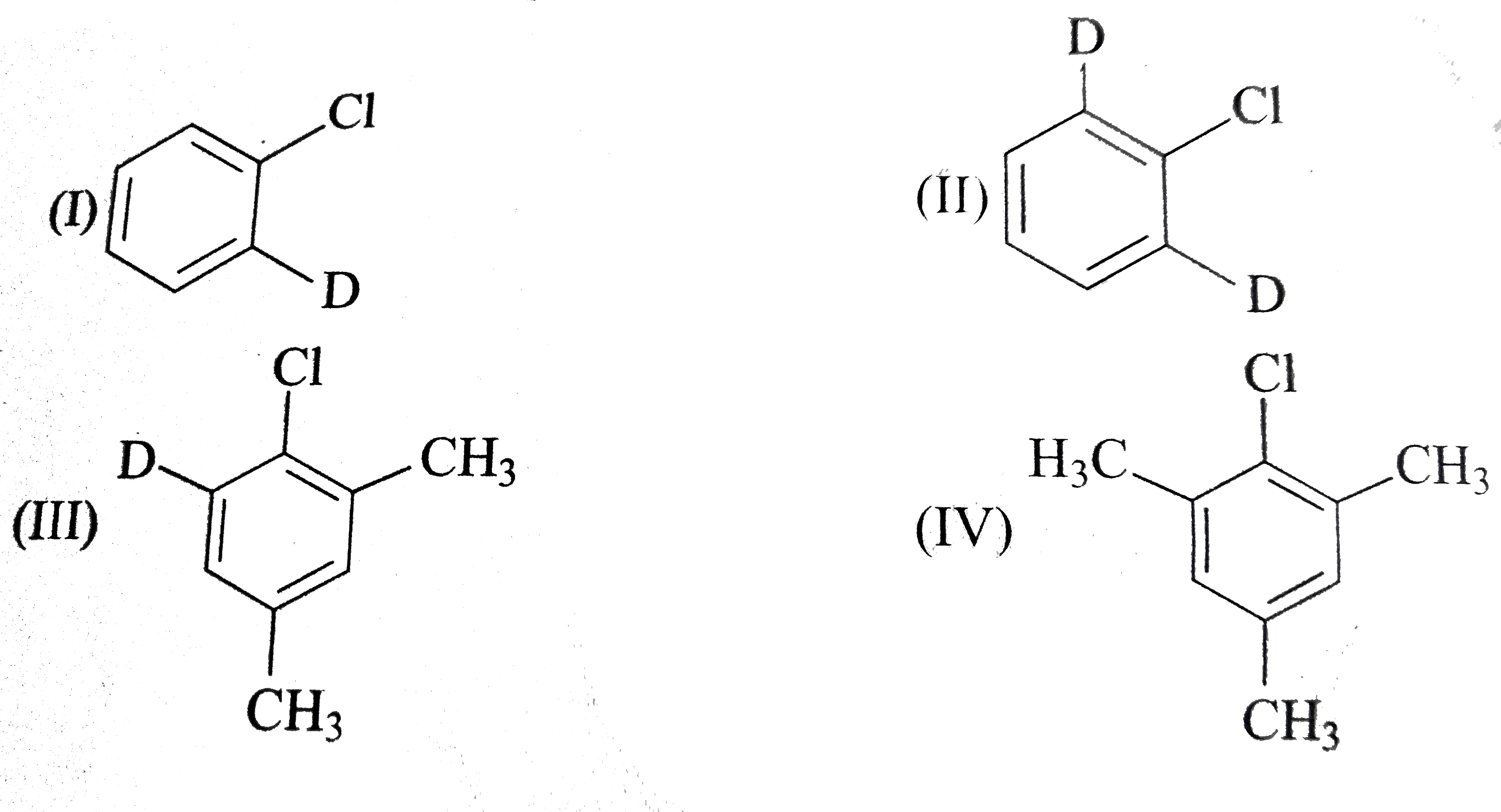Which of the following undergoes nucleophilic substitution exclusively by SN1 mechanism?
A
Benzyl chloride
B
Ethyl chloride
C
Chlorobenzene
D
Iso-Propyl chloride
Text Solution
The correct Answer is:A
In benzyl chloride, the carbocation formed during SN1 mechanism is resonance stabilised.

|
Updated on:21/07/2023
Topper's Solved these Questions
- BOOK - MTG GUIDECHAPTER - HALOALKANES AND HALOARENES EXERCISE - CHECK YOUR NEET VITALS25videos
HALOALKANES AND HALOARENES
- BOOK - MTG GUIDECHAPTER - HALOALKANES AND HALOARENES EXERCISE - AIMPT/NEET10videos
HALOALKANES AND HALOARENES
- BOOK - MTG GUIDECHAPTER - HALOALKANES AND HALOARENES EXERCISE - AIMPT/NEET10videos
HALOALKANES AND HALOARENES
- BOOK - MTG GUIDECHAPTER - GENERAL PRINCIPALS AND PROCESSES OF ISOLATION OF ELEMENTSEXERCISE - AIPMT/NEET (MCQs)10videos
GENERAL PRINCIPALS AND PROCESSES OF ISOLATION OF ELEMENTS
- BOOK - MTG GUIDECHAPTER - ORGANIC COMPOUNDS CONTAINING NITROGENEXERCISE - AIPMT/NEET MCQs21videos
ORGANIC COMPOUNDS CONTAINING NITROGEN
Similar Questions
Knowledge Check
- Question 1 - Select One
Which of the following undergoes nucleophilic substitution exclusively SN1 mechanism?
ABenzyl chlorideBIsopropyl chlorideCChlorobenzeneDEthyl chloride - Question 2 - Select One
Which of the following undergoes nucleophilic substitution exclusively SN1 mechanism?
ABenzyl chlorideBEthyl chlorideCChlorobenzeneDIsopropyl chloride - Question 3 - Select One or More
Which of the following easily undergo nucleophilic substutition by SN1 mechanism in butanol
AC6H5CH2BrBBrCH2CH=CH2C(CH3)3CBrD(CH3)3CCH2Br
Which of the following haloakane undergoes nucleophilic substitution reaction by SN2 mechanism only
View SolutionWhich of the following easily undergo nucleophilic substutition by SN1 mechanism in butanol
View SolutionWhich of the following compounds undergoes
nucleophilic substitution most readly?View SolutionWhich of the following will not undergo nucleophilic aromatic substitution ?
 View Solution
View SolutionWhich of the following will not undergo nucleophilic aromatic substitution ?
 View Solution
View Solution

